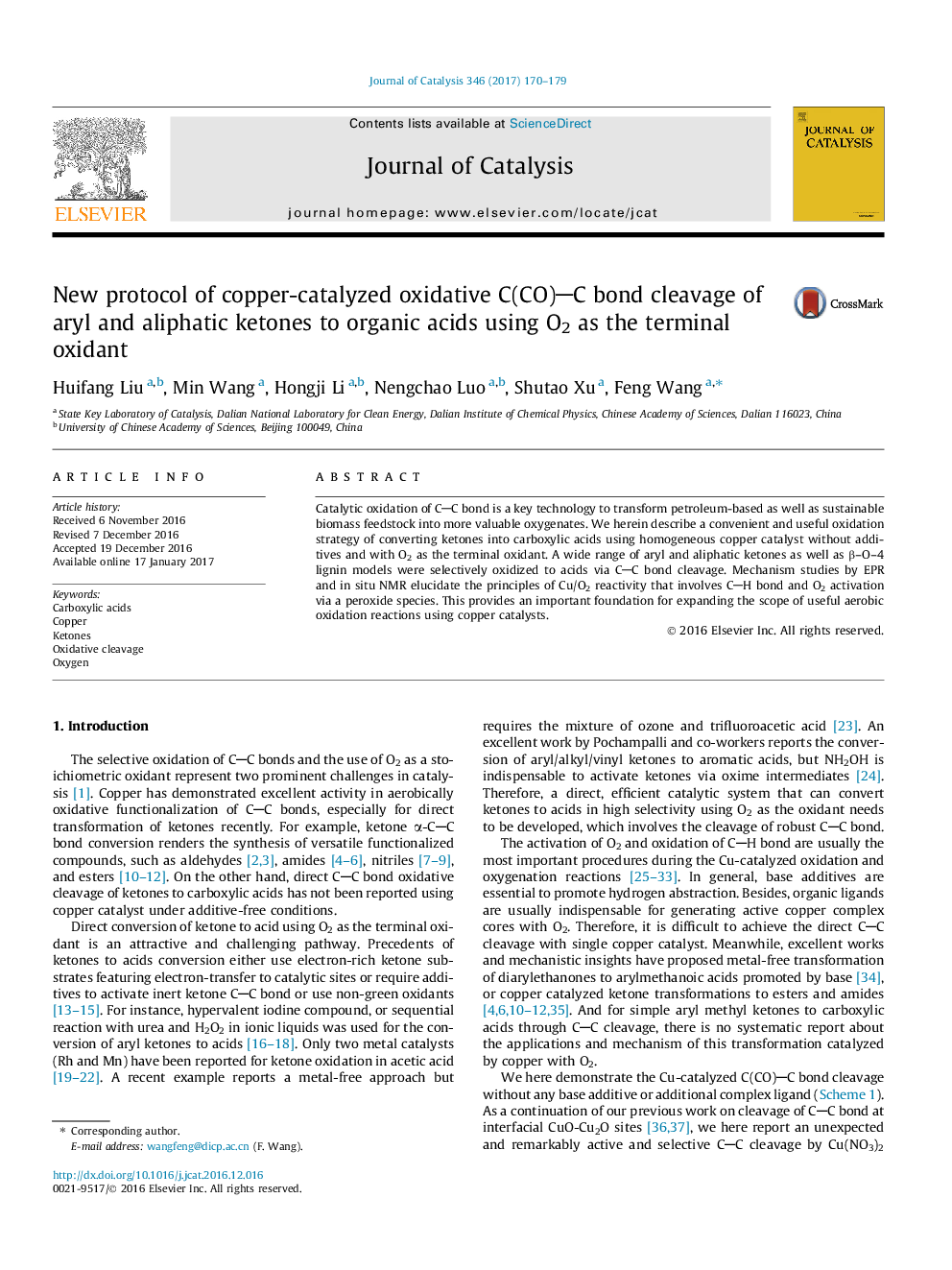| Article ID | Journal | Published Year | Pages | File Type |
|---|---|---|---|---|
| 6455728 | Journal of Catalysis | 2017 | 10 Pages |
â¢Cu(NO3)2 could catalyze the oxidative CC cleavage of ketones to acids.â¢A wide range of ketones have good to excellent yields.â¢In situ NMR and EPR gave possible intermediates and mechanism.â¢Electrochemical study of copper salts in various solvents has been conducted.
Catalytic oxidation of CC bond is a key technology to transform petroleum-based as well as sustainable biomass feedstock into more valuable oxygenates. We herein describe a convenient and useful oxidation strategy of converting ketones into carboxylic acids using homogeneous copper catalyst without additives and with O2 as the terminal oxidant. A wide range of aryl and aliphatic ketones as well as β-O-4 lignin models were selectively oxidized to acids via CC bond cleavage. Mechanism studies by EPR and in situ NMR elucidate the principles of Cu/O2 reactivity that involves CH bond and O2 activation via a peroxide species. This provides an important foundation for expanding the scope of useful aerobic oxidation reactions using copper catalysts.
Graphical abstractDownload high-res image (59KB)Download full-size image
